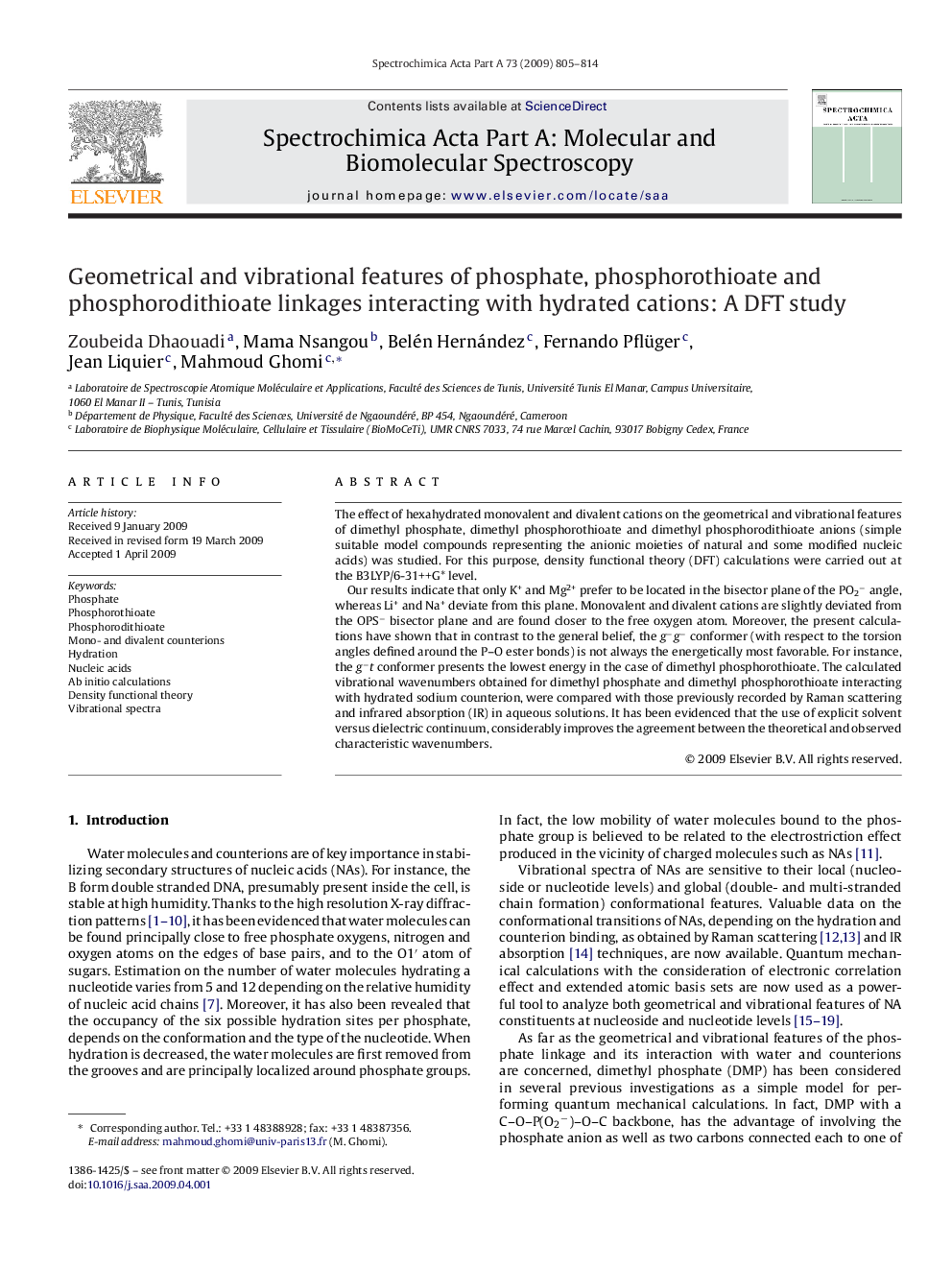| Article ID | Journal | Published Year | Pages | File Type |
|---|---|---|---|---|
| 1233046 | Spectrochimica Acta Part A: Molecular and Biomolecular Spectroscopy | 2009 | 10 Pages |
The effect of hexahydrated monovalent and divalent cations on the geometrical and vibrational features of dimethyl phosphate, dimethyl phosphorothioate and dimethyl phosphorodithioate anions (simple suitable model compounds representing the anionic moieties of natural and some modified nucleic acids) was studied. For this purpose, density functional theory (DFT) calculations were carried out at the B3LYP/6-31++G* level.Our results indicate that only K+ and Mg2+ prefer to be located in the bisector plane of the PO2− angle, whereas Li+ and Na+ deviate from this plane. Monovalent and divalent cations are slightly deviated from the OPS− bisector plane and are found closer to the free oxygen atom. Moreover, the present calculations have shown that in contrast to the general belief, the g−g− conformer (with respect to the torsion angles defined around the P–O ester bonds) is not always the energetically most favorable. For instance, the g−t conformer presents the lowest energy in the case of dimethyl phosphorothioate. The calculated vibrational wavenumbers obtained for dimethyl phosphate and dimethyl phosphorothioate interacting with hydrated sodium counterion, were compared with those previously recorded by Raman scattering and infrared absorption (IR) in aqueous solutions. It has been evidenced that the use of explicit solvent versus dielectric continuum, considerably improves the agreement between the theoretical and observed characteristic wavenumbers.
